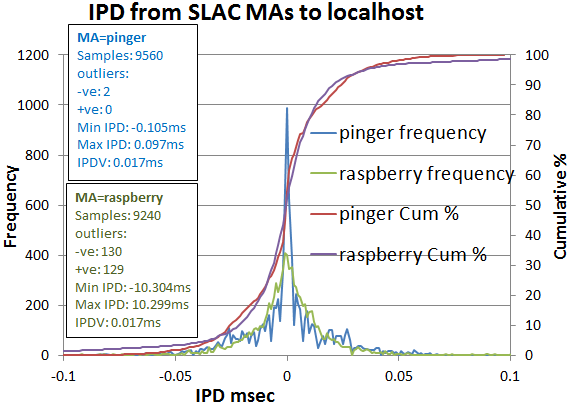...
Looking at the RTT frequency distributions it is apparent that:
- the pinger and raspberry host RTT frequency distributions hardly overlap at all (one sample (0.04%) of the raspberry pi distribution overlaps ~ 7% of the pinger distribution).
- the pinger host's Median RTT is 7 times smaller (0.03ms vs 0.2 ms) than that of the raspberry-pi
- the pinger host's maximum outlier (0.174ms) is ~ factor 60 smaller than the raspberry-pi.
- the pinger host exhibits a pronounced bimodaility not seen for the raspberry-pi.
- the IQRs are very similar (0.025 vs 0.020ms)
Looking at the IPD distributions it is apparent that:
- the pinger distribution is much sharper (max frequency 987 vs 408 for raspberry-pi)
- there is a slight hint of multi-modaility in the pinger distribution less visible in the raspberry-pi distribution
- the minimum and maximum outliers are about a factor 100 lower for pinger than the raspberry-pi (~ +-0.1 vs ~10ms)
- the IQRIPDV's are similar (0.017ms), whereas the standard deviations differ by almost a factor of 10 (0.021ms vs. 0.227ms. This further illustrates the impact of smaller outliers seen by pinger.
...
